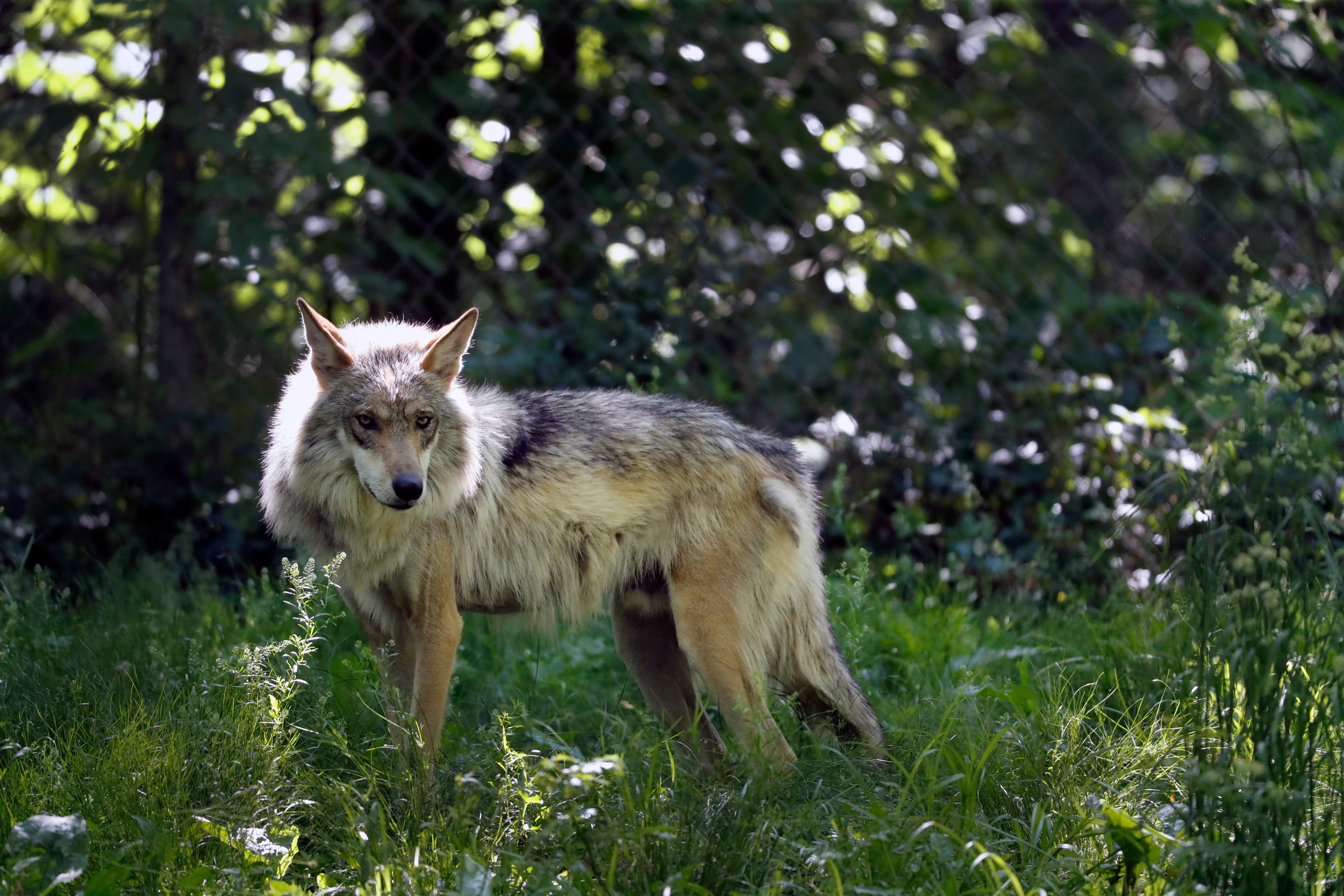Wild population of endangered Mexican wolves keeps growing
Once on the verge of extinction, the rarest subspecies of the gray wolf in North America has seen its population nearly double over the last five years

Your support helps us to tell the story
From reproductive rights to climate change to Big Tech, The Independent is on the ground when the story is developing. Whether it's investigating the financials of Elon Musk's pro-Trump PAC or producing our latest documentary, 'The A Word', which shines a light on the American women fighting for reproductive rights, we know how important it is to parse out the facts from the messaging.
At such a critical moment in US history, we need reporters on the ground. Your donation allows us to keep sending journalists to speak to both sides of the story.
The Independent is trusted by Americans across the entire political spectrum. And unlike many other quality news outlets, we choose not to lock Americans out of our reporting and analysis with paywalls. We believe quality journalism should be available to everyone, paid for by those who can afford it.
Your support makes all the difference.Once on the verge of extinction, the rarest subspecies of the gray wolf in North America has seen its population nearly double over the last five years, with more gains being reported in 2020, U.S. wildlife managers said Friday.
The results of the latest annual survey show there are at least 186 Mexican gray wolves in the wild in New Mexico and Arizona That marks the fifth straight year that the endangered species has increased its numbers, according to the U.S. Fish and Wildlife Service.
Reintroduction of Mexican wolves to the American Southwest began more than two decades ago. The program has pitted environmentalists, rural residents and wildlife managers against one another, prompting many legal challenges over management of the effort. The latest pending case involves a rewrite of the agency's management plan for the animals.
Some of details of the survey done over the winter were included in court filings made this week.
Environmentalists said they were hopeful about the numbers but that the wolves were still in a precarious position.
Bryan Bird, director of the Southwest program for Defenders of Wildlife, said ensuring that wolves and people can coexist will continue to be an essential part of long-term success for the species' recovery. He said he was hopeful the federal government would make wolf recovery more of a priority,
“So, while it is encouraging to see an increase in wolves, limited genetic diversity and high rates of illegal killing continue to slow recovery efforts,” he said. “There is still work to be done to establish a self-sustaining Mexican gray wolf population."
Michael Robinson of the Center for Biological Diversity said more stringent protections are needed for the wolves and more effective releases from captivity into the wild.
Meanwhile, ranchers and rural residents who live in the mountainous regions of southeastern Arizona and southwestern New Mexico where the wolves roam say livestock deaths due to predation continue to escalate as the population grows.
Unlike wolf reintroductions in Yellowstone and the northern United States, wildlife managers in the Southwest are faced with a climate that has encouraged a year-round calving season, meaning conflicts between livestock and wolves are constant rather than just a few months out of the year.
Ranchers contend the wolves are becoming more brazen despite efforts to scare them away using range riders on horseback or flagging along fence lines. The wolf recovery team also uses feeding caches to draw wolves away from cattle.
According to the latest survey, there were 114 wolves in New Mexico and 72 in Arizona, marking a 14% increase from the previous year. In 2019, the wolf recovery team documented a population increase of nearly 25%.
Fish and Wildlife Service Mexican Wolf Recovery Coordinator Brady McGee noted that about half of the 124 pups that were born in 2020 survived. The average survival of Mexican wolf pups is around 50%.
“Pup production and recruitment in the wild population is extremely important to the recovery of this species. We are thrilled to see this number continuing to rise,” he said in a statement.
The wolf recovery team also placed 20 captive-born pups into seven wild dens in 2020 as part of a cross-fostering program aimed at boosting the population's genetic diversity. Officials said seven of the pups have since been captured and collared and those efforts to determine how many survived will continue this year.
There also were slightly more packs roaming in 2020 versus the previous year. That includes about 20 breeding pairs that had pups.
The recovery team also documented 29 wolf deaths in 2020. Many of those cases remain under investigation, and officials rarely release many details.
Wildlife managers track the wolves using radio collars that provide timely information about location and behavior that can help with managing the population. Nearly 100 wolves have been outfitted with collars.
Once common throughout the U.S. Southwest and northern Mexico, the Mexican wolf was all but eliminated by the 1970s, prompting the U.S. government to develop a captive breeding program. There are about 350 Mexican wolves in more than 55 zoos and other facilities throughout the United States and Mexico.